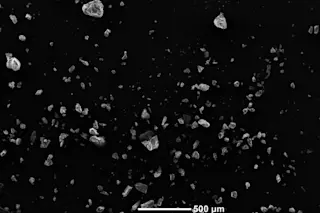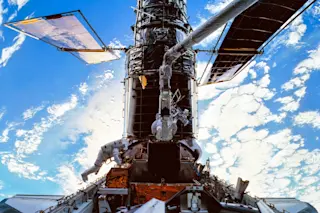The space shuttle, which long served NASA and humankind as a low-Earth-orbit 18-wheeler, died on July 21 at the NASA Kennedy Space Center in Florida, after gliding to an uneventful touchdown from a routine mission. It was 39 years old. The shuttle program had been suffering for several years from a wasting loss of enthusiasm for its high price tag and untamed risks. The final cause of death was failure to find any reason to keep pouring billions of dollars into an obsolete space ferry that lacked a stirring mission.
Initially embodying the dream that space travel might become routine and that we could establish an orbital beachhead for ambitious exploration of the moon and beyond, the shuttle ultimately symbolized the cruel reality of space travel—one in which merely ferrying people and cargo to space’s jumping-off point is staggeringly difficult, expensive, and dangerous. Along the way the shuttle suffered two ...















